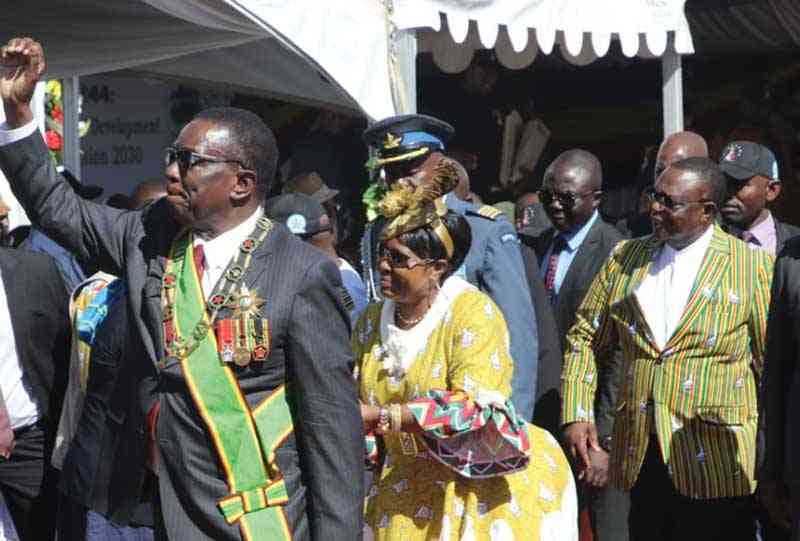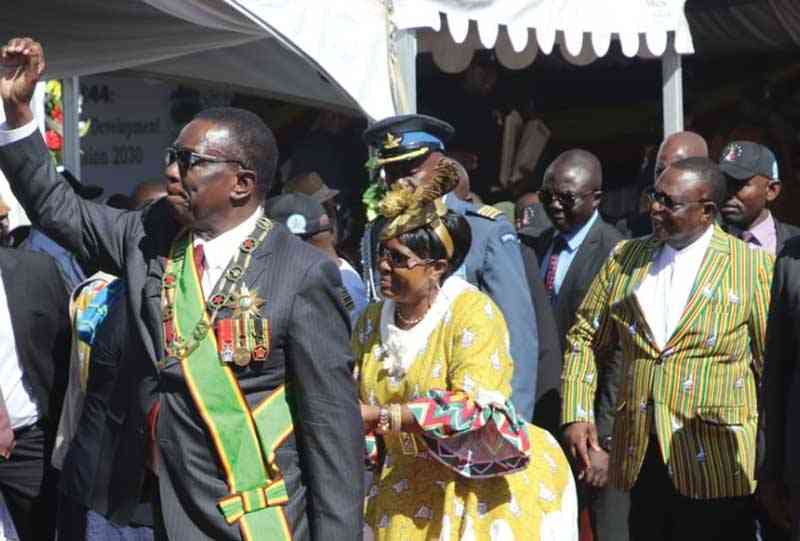
By Abigail Vimbai Kaplin
The Gold Standard is a monetary system in which a standard unit of currency is a fixed quantity of gold or is kept at the value of a quantity of gold. Dating back to history, the gold standard was first put into operation in the United Kingdom in 1821.
It was at the same time silver had been the principal world monetary metal; gold had been long been used intermittently for coinage in another countries.
In the full gold standard that prevailed until 1914, gold could be bought in or sold in unlimited quantities at a fixed price in convertible paper money per unit weight of the metal.
The reign of the full gold standard was short, lasting only from the 1870s to the outbreak of World War I. That war saw restrictions on gold export in nearly every country.
By 1928, the gold standard had been reestablished although, there was relative scarcity of gold, most countries developed a gold exchange standard in which they supplemented their central bank gold reserve currency with currencies US Dollars and British Pounds. However, another worldwide shock of 1930- the Great Depression saw not a single country remained on full gold standard by 1937.
It is apparent that the United States however set a new minimum dollar price for gold to be used when purchasing and selling by foreign central banks. This action was known as pegging the price of gold, provided the basis for the restoration of an international gold standard after the World War 2. Notably after this war most exchange rates were pegged either to the United States Dollars or to gold.
For international payments a gold standard of currencies convertible to dollars and gold for international payments in 1956. However by 1971, the gold reserves began to dwindle and the free conversion of dollars to gold at a fixed rate for exchange in external payments was brought to an end and the dollar and other paper currencies were brought into force.
- Chamisa under fire over US$120K donation
- Mavhunga puts DeMbare into Chibuku quarterfinals
- Pension funds bet on Cabora Bassa oilfields
- Councils defy govt fire tender directive
Keep Reading
“We have Gold because we cannot trust governments,” President Herbert Hoover famously said in 1933 in his statement To Franklin D Roosevelt.
This Statement brought a shift in the financial history by the emergence of Emergency Banking Act which forced Americans to convert their gold coins, bullion and certificates into U.S Dollars. Gold has a unique asset class which countries then and now acknowledge its influence on the supply and demand market.
Though the Gold standard has been neglected under the auspices of lack of trust, modern states or developed countries behind the curtain still acknowledge the gold standard as a way to keep reserves. Though it was replaced by Fiat money, some nations still struggle to have its money recognized or the teeth of inflation still bites it. The Problem with Zimbabwe is inflation.
The new question is that- can it survive the shackles of inflation by using the gold standard? According to Zimbabwe statistics Inflation in Zimbabwe rose by 10.6 percent in 2018 and it was projected to jump dramatically to 577.21 percent in 2020. According to the reserve Bank statistics by January 2021 it stood at 362.6%.
Let us turn to the real facts in Zimbabwe:
- The country has no foreign exchange reserves worthy of note which to support its currency.
- The country has poor, outdated industrial machinery and insufficient electricity supplies and is unable to produce goods that are competitive enough for the international markets.
- The country has a deficit in balance of payments and a shortage in foreign exchange
- The exchange rate of local currency is at the mercy and whims of speculators, detractors and agents’ provocateurs.
- Zimbabwe has failed to get sufficient support from international financial institutions to make the exchange rate stable.
Zimbabwe is one of the highly mineralized countries in the world and yet is dipped in economic confusion and poverty. Yet in spite of these challenges, the country can still have a stable exchange rate. The gold standard history mentioned earlier better explains the Zimbabwe’s solution in the next years.
The countries we can now name “developed” used the gold standard at a critical stage in their economic growth especially in the 19th Century. Let us talk about Belgium, Germany, France, Russia, Italy and United States, Portugal and Canada however China used Silver which went perfectly well with them because they have limited gold resources. Zimbabwe occupies a place of pride because of its veritable source of gold.
Just 3 years ago former Reserve Bank of Zimbabwe governor Dr Mangudya boasted that Zimbabwe has the second largest gold reserves per square kilometer in the whole worldwide with 13 million tonnes of proven reserves with 580 tonnes been exploited since 1980. By 2023 it will have a 12 billion dollar gold per annum.
The answer to inflation or economic poverty in Zimbabwe is to put Zimbabwean dollar on gold standard with special adaptions is quite critical and will be highlighted later. The country has more than enough gold to make it work if the RBZ fails to seize control of the exchange rate from economic saboteurs and agents provocateurs is the biggest cause of unprecedented inflation in Zimbabwe. The gold standard will represent a home grown solution needing no external intervention.
The implementation will certainly show Zimbabwe is a special place of pride because of its abundance gold. Zimbabwe will show other developing countries and African countries the real value of their natural resources.
The impact of putting the local currency on the Gold standard:
- The US:Zim Dollar rate will be fixed at a desired exchange rate and it will be maintained there by deliberate official control
- Prices will come down. This is called deflation. It will serve a purpose of correcting the unjustified inflation in recent times. Local currency incomes will rise in real terms
- The political bar in a country will be raised unstable internal politics will vanish. Confidence in the government and the banking system will return.
- Macroeconomic stability will return and this will attract both local and foreign investment and in return fuel economic growth
- It now rests with the governments to counter inflation since they enjoy the monopoly of printing money. The RBZ will not have to print more money because the current stock of cash will increase.
- There will be more money circulation and it will eliminate cash premium over electronic money
- Hoarders and traders will submit more to the new financial system
The (How part) highlighted earlier comes into play here- What it means is a gold standard system provides money that the politicians cannot create at will, a money that people can trust. The US Dollar provides all that in Zimbabwe since it cannot be produced at will by local government. The US Dollar can be a store value but not for long but the gold standard can stay if we continue to produce more gold annually but it starts when Zimbabwe accept US dollars as cash then move to the gold standard later, Zimbabwe is already operating at a quasi-gold standard since its inflation has dropped to 161.9% in May this year. Secondly in March 2020, there was a widespread belief that the Zimbabwean government along with other African states want to partner with Apollo Fintech as their partner in launching digital currencies. The CEO of Apollo Fintech had confirmed they were working with the country on a gold backed coin. This can be breakthrough in the financial system of not only Zimbabwe but other African Countries.
Notably, the return to the Gold Standard was a glint in Mugabe and Gaddafi’s eyes. Apparently, at the time of Independence in 1980 the local currency remained stronger than greenback for, when it was introduced it was at $0.71:US1 in 1970 and at 68cents against US$1 in 1980. The idea of introducing a gold backed currency seemed to appeal to the late Robert Mugabe, the former president. He raised the possibility that a regional gold supported currency for entire Africa is possible with the late Muammar Gaddaffi the late Libyan President in 2009. Gaddaffi wanted a common gold currency for the entire continent, while Mugabe proposed that the African Union member states should introduce the gold standard money individually. Though the idea never caught on other African countries it quietly faded away but, the former US President Donald Trump and the famous economist Judy Shelton even asked for a new Bretton Woods Conference just to initiate the return of the Gold Standard and since 2011 at least six states have passed laws recognizing gold and silver as currencies.
On a greater scale, the Gold standard has its own advantages for Zimbabwe. Under a gold standard, the temptation to overinflate is allegedly absent that is, gold cannot be “created out of thin air.” It would follow that a return to a gold standard would be the only way to guarantee price level stability and greater economic stability. Developing countries need to improve on infrastructure for reserves and align their policies accordingly to return to a full gold standard.
Abigail Vimbai Kaplin is a Masters student at University of Zimbabwe studying International Trade and Diplomacy











